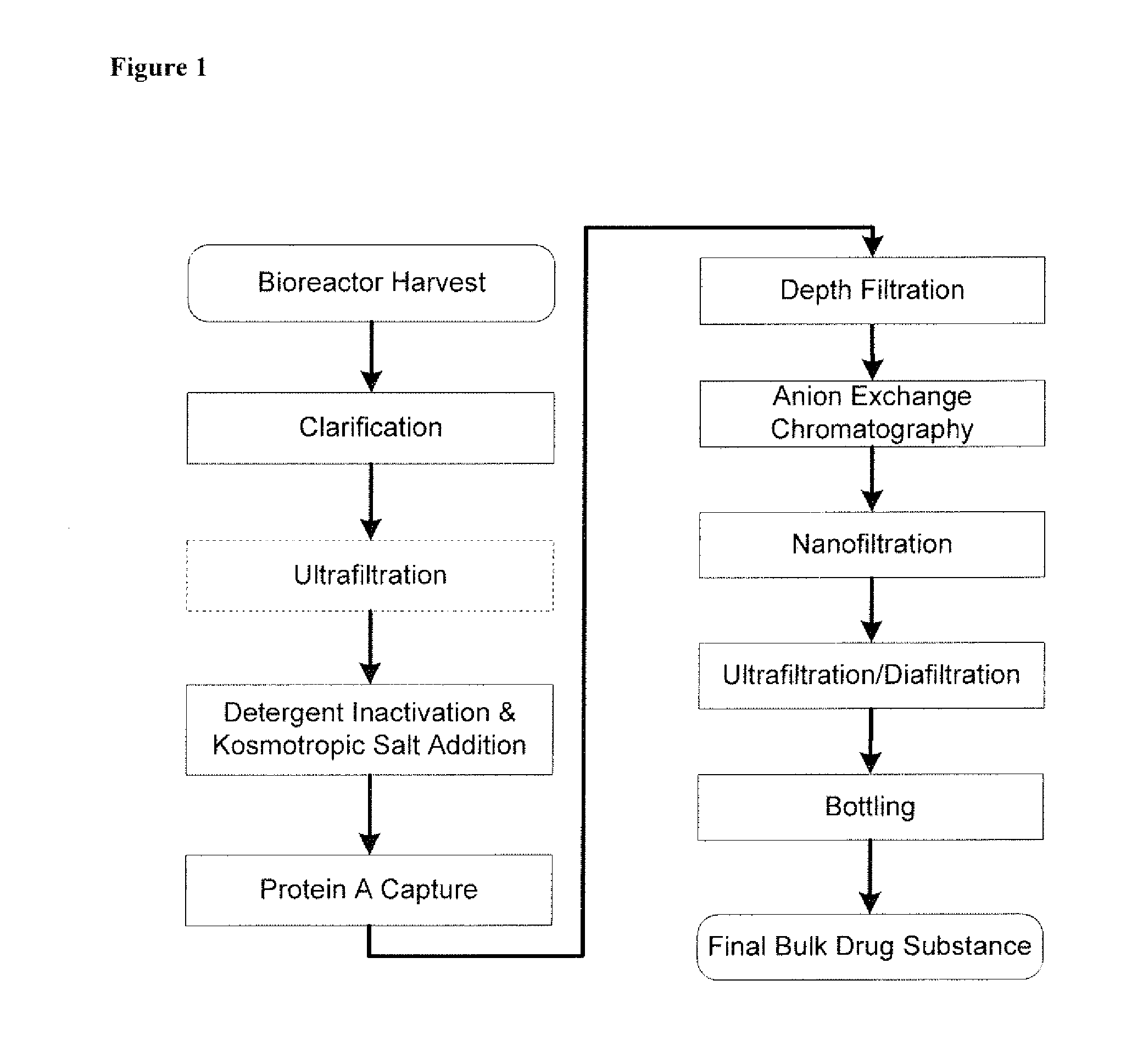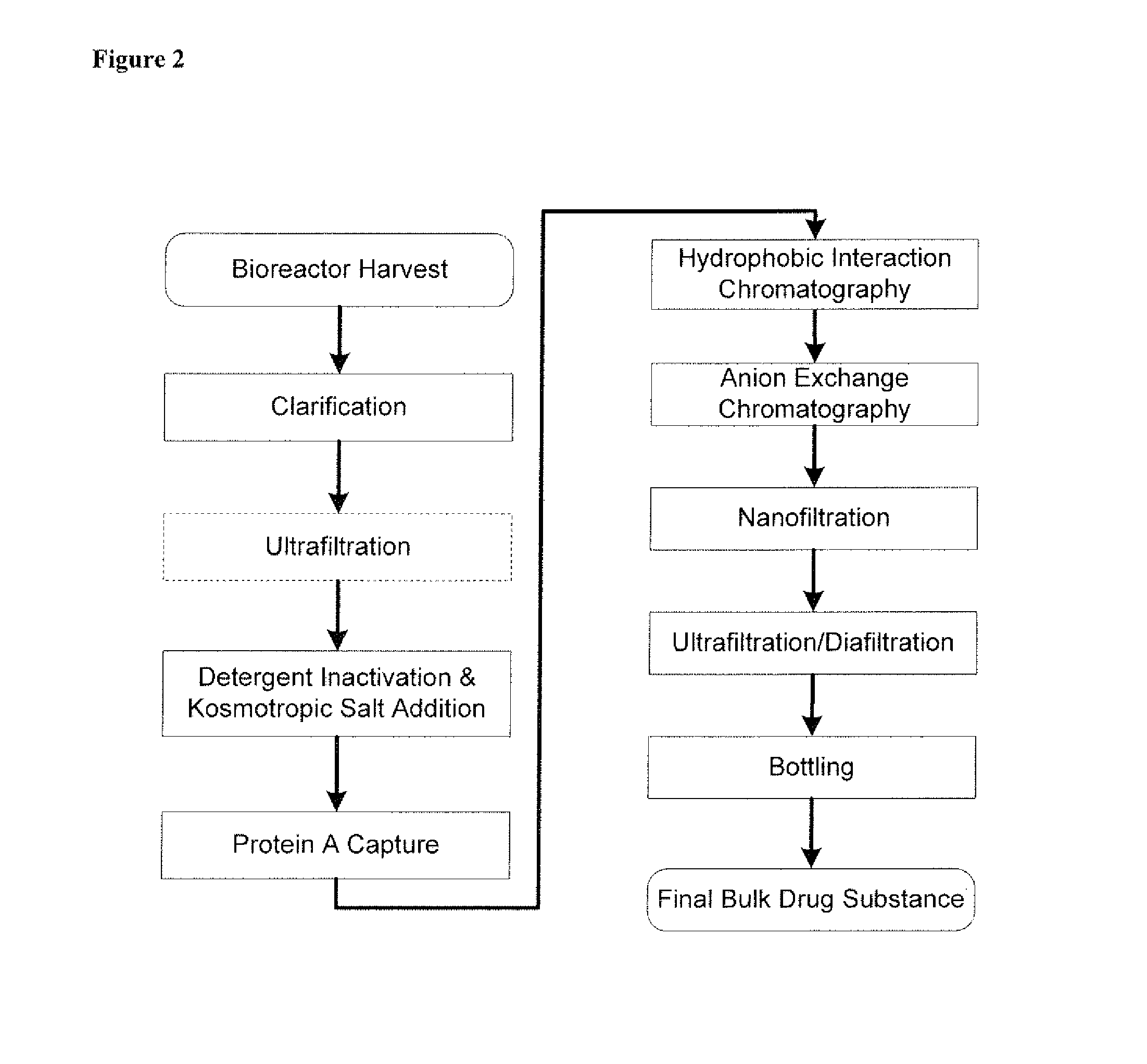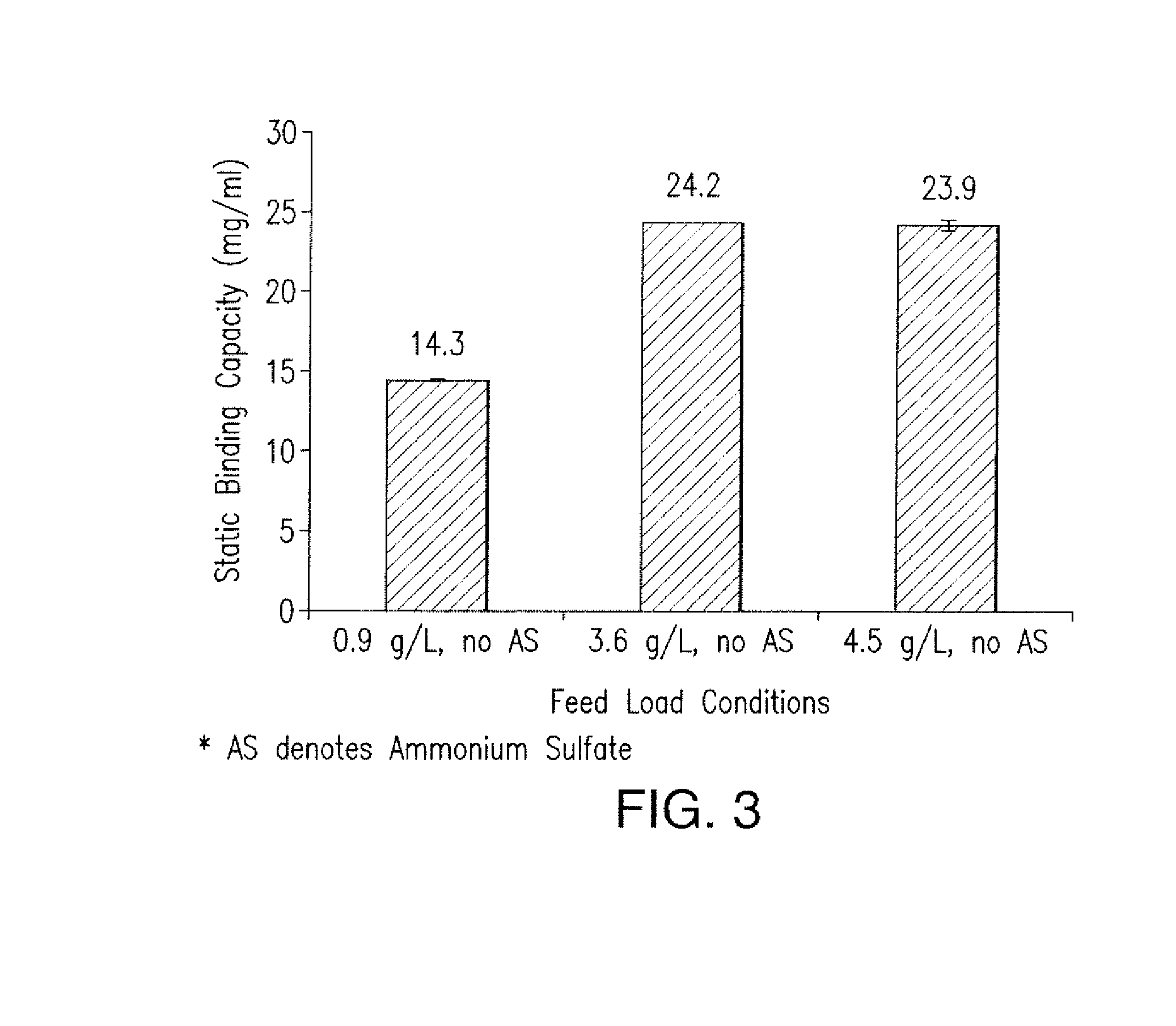Novel purification of non-human antibodies using protein a affinity chromatography
a technology of affinity chromatography and non-human antibodies, which is applied in the field of new purification of non-human antibodies using protein affinity chromatography, can solve the problems of low binding capacity, large demand for protein, and significant increase in operating cos
- Summary
- Abstract
- Description
- Claims
- Application Information
AI Technical Summary
Benefits of technology
Problems solved by technology
Method used
Image
Examples
examples 1
5.1. Examples 1
Effect of MAb Concentration and Kosmotropic Salts on Static Binding Capacity of MabSelect SuRe Protein A Resin for Canine MAb A
[0157]The static binding capacity (Qs) of MabSelect SuRe Protein A resin for a Canine MAb A was measured at various feed concentration and salt conditions. In one experiment, a semi-purified canine MAb feed was used to evaluate the Qs values for the resin at different protein concentration. 500 ul of 20% MabSelect SuRe resin slurry was first transferred into a 7 mL size filter column. The resin was washed with 2 mL of water, followed by 2 mL of 0.1 M acetic acid pH 3.5 solution, 4 mL of water and then 5 mL of equilibration buffer which consisted of 50 mM Tris, 100 mM NaCl at pH 7.0. The canine MAb A feed was conditioned to ˜pH 7.1 and conductivity ˜11.6 mS / cm with final concentration ranging from 0.9 to 4.5 g / L. The resin was incubated with 1.9 to 4.5 mL of each feed on a rotating mixed for 2 hours at room temperature. After adsorption, the re...
example 2
5.2. Example 2
Effect of MAb Concentration and Ammonium Sulfate on Dynamic Binding Capacity of Canine MAb A on MabSelect SuRe Protein A Resin
[0161]The dynamic binding capacity (DBC) of canine MAb A on a MabSelect SuRe Protein A column was first measured using a clarified harvest in the absence of (NH4)2SO4 or other kosmotropic salt. A canine MAb A clarified harvest (initially at ˜1.0 g / L titer) was first concentrated by 8-fold using a 30 kD Biomax membrane cassette. The concentrated harvest was 0.22 um filtered and then diluted with phosphate-buffered saline (PBS) solution to obtain final protein concentration of 0.8-5.6 g / L. These conditioned harvest feeds were used as the load material for MabSelect SuRe column. The column was first equilibrated with PBS buffer followed by feed loading at a flow rate corresponding to 4 min residence time (RT). The flow-through fractions were collected and measured using a Poros G assay to quantify MAb A concentrations which were used to determine t...
example 3
5.3. Example 3
Effect of Various Kosmotropic Salt on Dynamic Binding Capacity of Canine MAb A on MabSelect SuRe Protein A Resin
[0164]Apart from (NH4)2SO4, Na2SO4 and NaCltrate were also evaluated in DBC experiments for canine MAb A on the MabSelect SuRe resin. The feed preparation was similar to that described in Example 2, except that the concentrated clarified harvest was supplemented with a concentrated Na2SO4 or NaCltrate stock solution to obtain final salt concentration of 0.5 or 0.3 M and protein concentration of 4.8-5.5 g / L. For comparison, a condition at 0.5 M (NH4)2SO4 at similar protein concentration was also conducted in this set of runs. The DBC experiments were performed at flow rate corresponding to 4 to 6 min RT.
[0165]FIG. 6 shows the breakthrough curves for canine MAb A on MabSelect SuRe Protein A resin when the feed contains 0.5 M (NH4)2SO4, 0.5 M Na2SO4, or 0.3 M NaCltrate. Consistent with the static binding capacity results, both Na2SO4 and NaCltrate give higher DB...
PUM
| Property | Measurement | Unit |
|---|---|---|
| concentration | aaaaa | aaaaa |
| concentrations | aaaaa | aaaaa |
| diameter×about | aaaaa | aaaaa |
Abstract
Description
Claims
Application Information
 Login to View More
Login to View More - R&D
- Intellectual Property
- Life Sciences
- Materials
- Tech Scout
- Unparalleled Data Quality
- Higher Quality Content
- 60% Fewer Hallucinations
Browse by: Latest US Patents, China's latest patents, Technical Efficacy Thesaurus, Application Domain, Technology Topic, Popular Technical Reports.
© 2025 PatSnap. All rights reserved.Legal|Privacy policy|Modern Slavery Act Transparency Statement|Sitemap|About US| Contact US: help@patsnap.com



